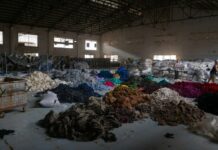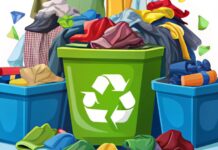The textile industry is undergoing a significant transformation, driven by global regulatory changes and a growing consumer demand for greater transparency. These shifts are particularly evident in the practices surrounding textile dyeing, an area traditionally characterized by its environmental challenges. As consumers become more environmentally conscious, they demand products that are not only aesthetically pleasing but also sustainably produced. Alongside evolving regulations aimed at reducing ecological impact, these factors are pushing the industry towards adopting sustainable dyeing practices. This change promises to redefine how textiles are produced, offering both challenges and opportunities for textile manufacturers worldwide.
Overview of Global Regulatory Changes
In recent years, the textile industry has faced a dynamic regulatory landscape shaped by a combination of environmental, social, and economic considerations. These changes are primarily aimed at curbing the harmful impacts of dyeing practices, known for significant environmental degradation and health risks. The global regulatory framework is evolving to ensure sustainable practices that align with global climate goals and consumer safety.
Key Regulations and Their Impact
Several key regulations have been enacted worldwide, each with varying degrees of impact on dyeing practices:
– REACH (Registration, Evaluation, Authorisation, and Restriction of Chemicals) in the European Union requires companies to identify and manage risks linked to substances they manufacture and market.
– ZDHC (Zero Discharge of Hazardous Chemicals) is another initiative striving to eliminate hazardous chemicals in textile production by promoting industry-wide standards.
– The U.S. EPA’s standards regulate pollutant discharge by textile industries under the Clean Water Act to mitigate water contamination.
These regulations compel manufacturers to invest in cleaner technologies and sustainable practices, paving the way for substantial shifts in traditional dyeing methods.
Regional Differences in Regulations
The regulatory environment varies significantly across regions, reflecting differences in legislative priorities and economic development levels. For instance:
– In Europe, strict adherence to REACH and other environmental standards is mandatory, promoting meticulous control over chemical usage.
– Asia, housing several textile manufacturing giants, faces disparate regulations, with countries like China intensifying their regulatory efforts in recent years.
– In North America, regulations focus both on environmental impact and worker safety.
These regional differences necessitate a tailored approach to compliance, affecting how manufacturers operate globally.
Compliance Challenges for Textile Manufacturers
Adapting to these evolving regulations presents significant challenges for textile manufacturers. Key hurdles include:
– Investment in new technologies to meet stringent emission and chemical use standards.
– Training workforce to operate and maintain these technologies effectively.
– Managing costs associated with compliance, which can impact competitiveness.
Failure to comply not only leads to legal consequences but can also tarnish a company’s reputation and market standing.
Increasing Consumer Demand for Transparency
Alongside regulatory pressures, consumer demand for transparency is redefining industry standards. Today’s consumers are more informed and conscious about their purchasing decisions, expecting brands to demonstrate ethical and sustainable practices.
The Rise of Ethical Consumerism
Ethical consumerism, driven by environmental concerns and social responsibility, is on the rise. Consumers are increasingly prioritizing brands that reflect their values, seeking assurance that the products they buy are produced sustainably and ethically.
Transparency in Supply Chains
Transparency has become crucial, prompting companies to disclose their entire supply chain processes. This includes providing information about sourcing, production practices, and the environmental impact of their products. Transparency not only builds trust but also differentiates brands in a competitive market.
Impact on Brand Reputation
A brand’s reputation hinges significantly on its transparency practices. Consumers are likely to support brands that actively showcase their commitment to sustainability, making transparency a vital component of brand strategy. This accountability reinforces consumer loyalty and enhances brand equity in an ever-demanding marketplace.
In conclusion, global regulatory changes combined with increasing consumer demand for transparency are driving significant transformations in dyeing practices within the textile industry. Adopting sustainable practices not only ensures compliance but also aligns with consumer expectations, fostering a more responsible and resilient industry.
Influence on Dyeing Practices
Shift Toward Sustainable Dyes
The textile industry is experiencing a significant shift toward sustainable dyes, largely driven by both regulatory changes and consumer demand. As environmental regulations tighten globally, manufacturers are compelled to reduce harmful chemical waste and prioritize eco-friendly processes. This shift is reflected in the increased use of natural and biodegradable dyes, which present fewer risks to both ecosystems and human health.
Consumer preferences are also steering this change. Informed buyers today seek transparency in the products they purchase, favoring items manufactured with less environmental impact. This has led brands to adopt more responsible dyeing practices, focusing on sustainable ingredients that cater to this eco-conscious clientele.
Innovations in Dyeing Technologies
Advancements in technology are revolutionizing how dyes are applied to textiles, offering sustainable alternatives that fulfill regulatory and consumer expectations. Digital printing, for example, uses significantly less water compared to traditional methods, mitigating waste and reducing pollution.
Other emerging technologies include:
– Waterless Dyeing: Methods that drastically cut down water usage, appealing to both regulators and consumers demanding sustainable practices.
– Bio Dyeing: Innovations utilizing enzymes or genetically engineered bacteria to produce colorants, furthering the ecological benefits.
These technologies not only decrease environmental footprints but also enhance efficiency and scalability within production processes, propelling the industry forward.
Challenges and Opportunities in Transition
Adopting sustainable dyeing practices comes with its set of challenges and opportunities. On one hand, initial costs of implementing new technologies and training staff can be high. Additionally, sourcing sustainable dyes in the quantities needed for large-scale operations may prove difficult initially.
However, these challenges also present opportunities for growth and innovation. Companies that successfully transition can gain a competitive edge, building brand loyalty as they align with consumer values. Moreover, they stand to benefit from long-term cost savings associated with waste reduction and improved efficiency.
In response, collaboration across the supply chain is necessary. Stakeholders must work together to develop solutions, share insights, and support one another through the inevitable growing pains. As the industry evolves, those embracing sustainable innovations will lead the charge in meeting regulatory and consumer demands.
Conclusion
In conclusion, the textile industry is experiencing a transformative shift in its dyeing practices due to global regulatory changes and growing consumer demand for transparency. Textile companies are increasingly adopting sustainable dyeing methods to meet stringent international standards and satisfy consumers’ desire for eco-friendly products. This evolution not only helps reduce the environmental footprint of dyeing processes but also enhances brand reputation and consumer trust. As the industry continues to innovate, the collaboration between manufacturers, regulators, and consumers will be pivotal in building a sustainable future.
































